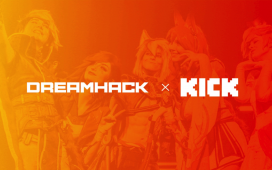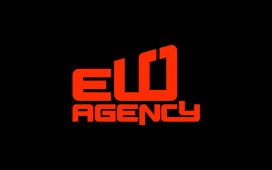Mentioned in this article
I often find myself discussing the question of whether esports is closer to sports or entertainment. While I strongly believe that athleticism, winning, and performing at the highest level is part of the equation, I also believe that esports is closer to Game of Thrones than it is to the NFL. It’s entertainment. The one company I often use as an analogy is World Wrestling Entertainment (WWE).
Yes, I know, it’s a soap opera. I won’t discuss the actual storylines, but what I want to examine are some of the different angles people take when talking about WWE and its potential as a model for esports.
To Begin With: What is WWE?
On its website, WWE describes itself as “an integrated media organization and recognized leader in global entertainment. WWE’s operations are organized around the following three business activities: media, live events, and consumer products.” While I acknowledge the structural differences between the current esports ecosystem and WWE’s operation, I feel that its description would fit very well for today’s tier 1 esports organizations. Even though esports teams do not typically organize tournaments, their operation is aligned with them, as they send their teams around the world to compete. I know there is a lot more to talk about, and that WWE is not just all smiles and sunshine, but in this piece, I want to examine WWE’s three primary business activities and why I believe esports can learn a lot from WWE.
WWE is a public company and the graph below will give you an idea of its stock performance throughout the recent years. You could say they are doing well and have built a strong brand through their operational pillars.

At a Glance: Some of WWE’s Gaming Efforts
- UpUpDownDown (UUDD): In 2015, Austin Creed, better known by his WWE ring name Xavier Woods, launched a gaming channel on YouTube, where we can see WWE talent competing in video games for the UpUpDownDown championship title, among other game-related activities.
- UUDD x League of Legends: In 2018, WWE teamed up with Riot Games “to pit WWE stars against entertainers from the wrestling circuit’s feeder program, NXT, in [a] League of Legends showdown.”
Live Event Production Capabilities
According to its own website, WWE produces around “530 live events a year within the United States and abroad” and held “120 total events in the third quarter of 2019.” Weekly live shows include Monday Night RAW, Friday Night SmackDown, NXT, and 205 Live. As a comparison, according to Twitch’s VP of global esports Justin Dellario, the Amazon-owned live streaming platform produced 161 tournaments under the Twitch Rivals brand through a total of 102 show days. In other words, this is one show every 3.6 days throughout the year. Technically, this makes Twitch one of the biggest, if not the biggest, tournament organizers in the esports industry.
WWE’s shows travel around the United States/globe, and happen in different cities every week, which is complex from a logistics standpoint. Rafal Mrzyglocki, founder and CEO of Aram, the Polish company that handles technical production for most of ESL’s events, commented on the logistic efforts:
“Trying to deliver an equal quality of an event with such a big amount of productions per year in global coverage is always a challenge,” Mrzyglocki told The Esports Observer. “Time is one factor but what is also important is to have access to the proper technology, specialists, and partners on the local markets. I can imagine that companies such as WWE have their shows formatted for years, while esports shows are still being shaped.

“That makes it even more difficult to accomplish the expected look and deliver a similar experience, which can be then replicated,” he continued. “Moreover, stages for esports competitions require a really big tournament infrastructure. Typical stage-related disciplines such as video, light, audio, staging, rigging, fabrications build as well as TV production are quite similar or using the common tools both for productions such as WWE and esports. What esports requires more is the mentioned infrastructure with space on the stage to accommodate sometimes 100 players, have a working computer station for each, network, etc.”
Just imagine the event capabilities WWE could bring to the table with its current understanding and experience in producing live events, and the ability to set up and tear down in a matter of days.
Storytelling, Character Development, and Building Superstars as the Key to Success
David Bourne, a staff writer for Sports Business Journal, published an article in April 2019, titled “Good stories are all about character development.” As you can imagine, the short piece was written around how WWE identifies and develops stories for its talent.
If you look at WWE from the scripted soap opera point of view, there are fabricated storylines that drive engagement with the audience. Leave the quality of stories aside and even ignore the good or bad acting capabilities of professional wrestlers. The key takeaway here is how these story-lines are communicated through e.g. social media. Every adult (hopefully) knows it’s fake and still it drives fan engagement. If you don’t believe me, go and check out some of WWE’s or its athletes’ social media accounts, or look at the fan engagement inside the arena during the shows. According to WWE, they have 1B social media followers in total.
It’s entertainment and people want to be part of it. The character of an athlete is scripted and what matters is how their stories are being told. Esports teams mainly communicate through social media, so my point here is that how WWE manages this space can bring a lot to the table when it comes to telling stories in an engaging way.

WWE builds superstars. Some move on and become actors, some act while still being in the ring, some sing, etc.. Superstars not only undergo physical training in the performance center, they also get media training in order to do their job outside the ring. There is another long-form article, written by Bourne, that’s also worth a read: “WWE’s talent factory,” talking about the performance center as “a labyrinth of spaces: a room for weightlifting; a green room for talent to master their camera presence; conference rooms for skull sessions to break down film; a medical and rehab facility; and areas to build social media content.”
I know some esports teams are already doing similar things or are looking to start them. Having your esports players go through training like this is invaluable for your content and your brand perception.
Monetizing Talent and Content
WWE owns the rights to “substantially all of its talent.” End of story. Talents are managed as independent contractors whose salary, according to WWE, depends on the amount of revenue they help to generate. Rights are monetized through consumer goods. WWE builds worldwide licensing programs for products such as, to quote the website, “toys, video games, apparel, housewares, collectibles, sporting goods, books, and more. WWE licensed products […] are available at all major retailers, including: Walmart, Target, Amazon, GameStop, Walgreens, Barnes & Noble, Hot Topic, Asda, and Smyths.”
To further quote WWE, it states that “the success of the WWE is due primarily to the continuing popularity of our Superstars.” So if you want to simplify the process, WWE develops characters and related story-lines, tours the U.S. and the world with its shows, and monetizes all of this by leveraging pretty much every opportunity you can imagine. This all sounds very simple, but apparently is a lot of effort. Looking at WWE’s annual revenues, it seems to be worth it, though:
In 2018, WWE generated $930M in total revenue. If we look into how that revenue was generated, we’ll find approximately $147M generated through live events and consumer products. In its financial report, WWE lists almost 84% of its revenue, around $683M, generated through media. This clearly shows that content is king and that content monetization can move the needle if your product is sexy for the audience.
In 2014, WWE launched it’s OTT service, the WWE Network, as part of its media operations. The network is mainly used for pay-per-view events and other originally created content, such as podcasts, documentaries, etc. The graph below will give you an idea of WWE’s subscriber base (quarterly averages). Looking at a $9.99 price point, you will get an idea of the revenue potential.
Besides monetizing content through its own network, media rights are another source of income. Shows like Monday Night RAW and Friday Night SmackDown are currently broadcasted on USA Network and Fox Sports. Bourne cites that both networks “agreed to pay the WWE a staggering $2.35B over five years.” And this is for the U.S. market alone. The shows are also broadcasted in other countries, for example by ProSieben Maxx, a free-to-air channel owned by ProSiebenSat. 1, in Germany.
There are many ways in which WWE monetizes its content. We have seen brand integrations, such as Alexa Bliss wearing a Buzz Lightyear outfit during Summer Slam in August 2019 with Toy Story 4 having been released in June, or the somewhat awkward KFC experience table during the Tables, Ladders, Chairs event in December 2019, to name two more recent examples.
WWE also monetizes its integration with the music industry, something we can currently see as a trend in the esports industry, too. For WWE “music is a crucial and emotional part” of its programming. We have seen Triple H working with Motorhead, music created by Killswitch Engage, Shinsuke Nakamura’s new entrance music, “Shadows of a Setting Sun” by Shadows of The Sun, and Sasha Banks’ updated entrance music featuring Snoop Dogg. With its music integrations, WWE serves multiple genres from Hip-Hop to Metal. Entrance music and performances, and collaborations for live events can be downloaded across multiple digital platforms.
I could go on and on about WWE’s content monetization strategies and have only named a few opportunities above to highlight the potential. Imagine if WWE would go all-in on an esports team or league and apply its media knowledge on telling stories about the athletes, build meaningful collaborations across its current business units and build superstars, the same way it currently does with its wrestlers.
Moving Women Closer to the Center

There is one more thing I want to highlight. According to Bourne, the current men to women ratio for tryouts in WWE’s performance center is 2-to-1; it used to be 4/5-to-1 when the center opened in 2013. This already gives a good indication of how WWE is pushing its women’s division. Today, it’s integrated into regular shows. WrestleMania 35 in 2019, for the first time, featured an all-female main event in the MetLife Stadium in New Jersey.
In November 2019, during WWE’s Crown Jewel main event in Saudi Arabia, WWE hosted the first-ever women’s wrestling match in the country. Without getting too deep, it was a massive milestone for the country and a touching moment for the audience, as well as for the athletes involved. In addition to the above, Forbes published a piece on how “The Women’s Division Has Finally Taken Over WWE,” that might be worth a read. It goes without saying that people in gaming and esports should learn a lot from this when it comes to women in the industry.
Closing Remarks and Food for Thought
As highlighted, WWE’s core business consists of media, live events, and consumer goods. Three business units that are very close to what we currently see in esports. WWE has proven that it understands how to build and monetize content, and I think that there is a huge potential for WWE in esports.
While WWE basically owns its ecosystem, the esports industry is way more fragmented. Publishers own the game IP, some teams have strong brands, while other teams stand for nothing at all. Some players are starting to realize that they have to build brands for themselves and leagues and big tournaments are split into open and closed ecosystems, where either the publisher organizes and runs events or engage a third party to run it for them. I wrote the lines above to showcase how WWE is running things, as I feel it could become a strong player in the market with its existing experience across the three business units.
There are many ways for WWE to tackle the gaming and esports industry, and I think it is just a matter of time before they will use their raw knowledge to smack down existing players in the market and become one of the NXT big brands in esports. Bad puns intended.
















